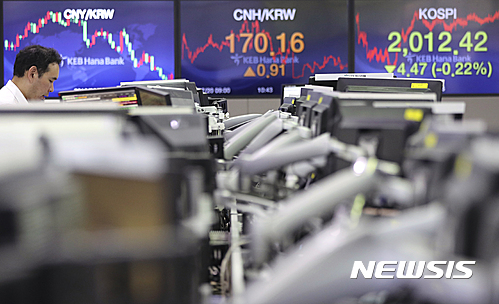
New energy industry: Korea’s next growth engine
By Joo Hyung-hwan – The Korea Times
Korea has never stopped seeking fast-growing sectors for targeted investments that can provide new impetus to the country’s economic growth.
As its latest initiative for a new growth engine, the Ministry of Trade, Industry and Energy (MOTIE) unveiled a detailed investment plan on July 5 to promote the “new energy industry” as Korea’s next growth driver.
The gist of the investment plan is that Korea will invest a combined 42 trillion won ($36.6 billion) into new energy businesses by 2020, including renewable energy, electric vehicles (EVs), energy storage systems (ESS) and smart grids. The plan aims not only to fight climate change but also to nurture a new export industry.
Germany’s recent renewable energy revolution provides a model for how the climate crisis can be turned into an opportunity. The renewable energy sector has transformed into one of Germany’s fastest-growing export industries. As of today, Europe’s largest economy exports more than 65 percent of the solar power generated in the country and nearly 70 percent of the wind power.
Germany’s clean energy industry is also one of the country’s biggest job-creators, more than making up for the jobs lost due to the slowdown of traditional manufacturing.
As of 2014, a total of 370,000 jobs have been created in Germany’s new energy sector, outnumbering redundancies in the traditional manufacturing industries. The number of jobs created in the new industry is expected to reach half a million by 2020.
MOTIE sees Germany’s successful energy ventures as a blueprint for Korea. The only thing needed is a clear policy direction and detailed action plans to attain the best results.
First of all, to develop and promote Korea’s new energy industry, 30 trillion won out of the total investment plan is slated to be spent on the construction of renewable energy power plants with a combined power generation capacity of 13 million kilowatts, equivalent to that of 26 coal plants.
To speed up renewable power plant construction, the ministry will raise the “renewable portfolio standard” to 5 percent from an earlier target of 4.5 percent in 2018, and from 6 percent to 7 percent in 2020.
The renewable portfolio standard, a regulation that requires more power to be generated from renewable sources, is a globally accepted tool to facilitate renewable energy.
In addition, incentives will be offered to solar power producers utilizing ESS, which will double the ESS market to 600 billion won by 2020.
A deregulation drive is another critical piece for the development of the new energy industry. A series of deregulatory measures will be put into action in the renewable energy sector. One such measure is to allow solar power generators to sell electricity to individual and corporate customers via the Korea Power Exchange.
MOTIE expects the opening of the power generation and supply market to draw more private companies into the new energy market.
The long-term investment goal is to develop these new energy companies into exporters. For this, pairings will be sought with Korean financial institutions and public energy giants such as Korea Electric Power Corp. that have global reputations and business experience to help new Korean energy ventures tap into overseas markets.
Since the historic Paris Climate Agreement last December, a growing number of countries, including Korea, have been pursuing the shift to clean energy. Whether climate change turns out to be an opportunity or a burden to Korea will depend on our success in developing the new energy industry into Korea’s next growth engine.


